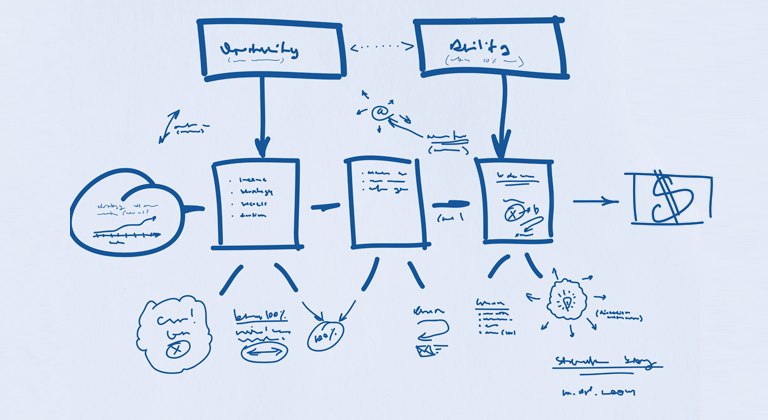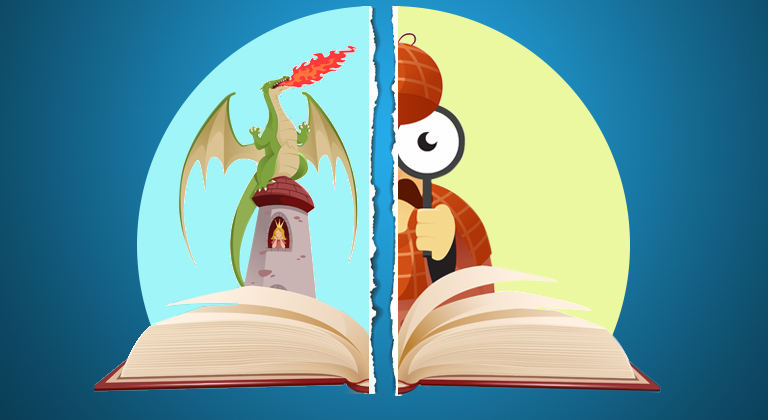Five Characters and Counting: How narrowing your focus can expand your story
By: Ginger | Posted on February 12, 2021
With most fiction, it’s the characters that make a story a success or not. Characters are what people remember, and when you’ve done a good job fleshing them out, you’ll find that your readers can’t get enough of them. They’ll read sequel after sequel, even when the plots are very different, just so that they can revisit the lives of the characters they love and continue to follow them on their journeys. And while it’s fine if your book has a large cast in general, Ginger is here to explain why you need to keep the focus on a much smaller set, and leave the rest as walk-ons, in order to strengthen your overall story. A couple of months ago, I wrote about having to go back to the drawing board on a novel I’d been working on for nearly six months. I’d written 160,000 words of it –… Read More >
Twelve Tips for Building a Self-Publishing Career
By: Nate | Posted on December 4, 2020
There are many paths to success and if you poll a dozen different successful self-published authors you might get a dozen unique answers on how they got their career going. But you’ll probably also find that regardless of differences in things such as genre or marketing strategies, most (if not all) of those authors also have a lot in common. This is because, at a lower level, there are some core things that are much more essential to success. So if you’re ready to move from occasional author to serious novelist, Nate has put together a list of twelve self-publishing tips that will help you kickstart your own writing career. Tip 1: Do your research. Not just about your favorite niches and not just the bestsellers, though. Watch and read the news. Watch for trends in other media, like television or movies. And definitely don’t be afraid to step outside… Read More >
US Copyright FAQ: Your Questions Answered
By: Nate | Posted on November 20, 2020
A couple of weeks ago we went over the rules around copyright and designers as it pertains to your cover design, but what about when it comes to your actual book? One of the questions authors often ask is whether they need to copyright their book in order to protect it. Unfortunately, like that last article and pretty much everything else related to self-publishing, the answer isn’t a simple yes or no. It really depends on a variety of factors, which is why Nate is back to go over what you need to know. Howdy, y’all! Let me preface this by saying that while I am pursuing a law degree with certification in intellectual property, I am not a lawyer, and I don’t really ever intend to practice. Nothing in this thread should constitute legal advice, and I would advise everyone to always engage a law professional in your jurisdiction… Read More >
When to throw out your first draft?
By: Ginger | Posted on November 13, 2020
For some authors, the common advice to “throw out your first draft” is the stuff of nightmares, but it should only be that scary if you’re taking it too literally. It’s rarely (if ever) necessary to just toss your book out and forget about it altogether! The point is more about how an author must sometimes be willing to tear their first draft down completely and rebuild it into a better or more marketable book. But the question is, how do you know when that’s needed? In his continuing series on turning your writing dreams into reality, Ginger lays out when and why you may need to go this route. If you’re serious about becoming a successful self-published author, you have to make some serious decisions about what you’ve already written and published; and sometimes, you’ll have to go right back to the drawing board. Ernest Hemingway warned authors… Read More >
Be a Plotter when it comes to your writing career!
By: Ginger | Posted on October 30, 2020
Just like some authors start a new story not knowing where it’ll lead, many self-published authors approach their writing career ‘by the seat of their pants.’ But is that the best path to success? In this installment in our series of posts related to turning your writing dream into a reality, Ginger lays out the argument that the truly successful authors approach their future in publishing with the same discipline as they plot out their stories. That is, they plan things out carefully by deciding on a genre, researching it thoroughly, and then commit to delivering books that meet reader expectations. It’s a well-known concept – the writer as “plotter” or “pantster.” In fact, we’ve written about it a number of times on this blog! A ‘plotter‘ plans out the path of their story, often using something like a ‘beat sheet’ or a story circle. Successful authors who literally… Read More >
How To ‘Support Yourself Through Writing’
By: Ginger | Posted on October 16, 2020
While there are certainly some authors that write and publish occasionally as a hobby, I think it’s safe to say that it’s the dream of most authors to one day quit their evil day job and get down to the business of writing for a living. In this first in an on-going series of related posts, Ginger will take you through the steps you need to turn that dream into a reality. He’ll start with goal setting, but future posts will cover topics like budgeting, coming up with your concepts and plotting your novels, right through to publishing, launching and promotion. And with the goal of turning your part-time dream into a full-time reality. I have a dream. If you’re reading this, I imagine you do, too: To support yourself as a self-published author – so you don’t need to bother with the day job, the hustle, or anything… Read More >
How To Finish Writing Your Book: Just Show Up
By: Ginger | Posted on October 2, 2020
I don’t need any hard data on the topic to know that the number of people that start writing a book far eclipses those that actually finish one. Most of us probably know at least one person that falls into that category, their unfinished masterpiece collecting dust on their shelf or laying forgotten in a drawer somewhere. In fact, many of us (myself included) were likely IN that category for a long period of time before finally taking writing seriously. But the key to finally getting it done wasn’t anything more complex than simply chipping away at it, and as Ginger points out, the more consistently we can do that, the easier it will eventually become and the more successful and prolific we’ll be. Here at Hidden Gems, we’ve spoken a lot about how important it is to write every day – and I mean a LOT. We’ve written… Read More >
One Method to Beat Writer’s Block
By: Edita A. Petrick | Posted on August 7, 2020
Last week, Ginger wrote about some of the things that prevent an author from writing, and how to fix them. But sometimes, even the most disciplined of us find that we just can’t put words to paper, even with those tips. Often it can be due to some sort of stress or change in your life, but no matter how hard you stare at that blank sheet and want to write, you just can’t force it to happen. In severe cases of writer’s block like that, when you seem to have temporarily lost your voice – your ability to come up with your own words and lay them out coherently – you may need to start right back at square one. It’s almost as if you’ve forgotten how, and need to be re-trained. Well, today’s guest blogger, Edita Anne Petrick, may have just the way to do that. To be… Read More >
The Secret to Daily Word Counts – The Path of Least Resistance
By: Ginger | Posted on July 31, 2020
If the old saying that “a writer writes” is true, why do so many authors find it difficult to keep the words flowing? Ginger has some thoughts on that, and shares some tips for authors who are serious about turning self-publishing into a career – or who already are, but just want to become more productive. The points below all ring true to me, particularly the second one as that was what led me to a corporate job and away from writing for many years (although in my case, it was more my own logical mind that talked me out of writing rather than anyone else – but the solution was the same.) So if you’re looking for a few tips on increasing your daily word count and finishing your books, read on! During all my blog posts about marketing, advertising, and promoting your books, I hope one thing has… Read More >
Does genre matter? Writing something different may teach you something new.
By: J.E. Rowney | Posted on July 24, 2020
If you’re like most authors, you’ve likely picked a genre that you know or like the best and embraced it, rarely (if ever) writing outside of it for a variety of reasons. Perhaps it’s because nothing else interests you, or because you’re afraid that your fans are only interested in reading that type of story from you. But as guest post author J.E. Rowney points out, there is a lot to be learned from stepping outside your comfort zone. Even if it’s just as a small writing experiment instead of a full blown novel, spending time in an unfamiliar genre can make you a stronger writer even when you return back to the familiar. As my readers will know, I write in the chick-lit or women’s fiction genre. My books focus on friendships and relationships. These are the things that interest me. They are what I want to read about,… Read More >

















